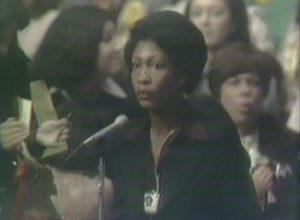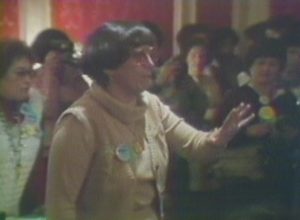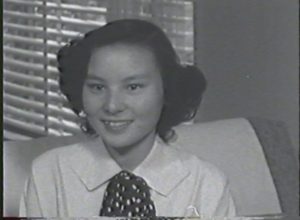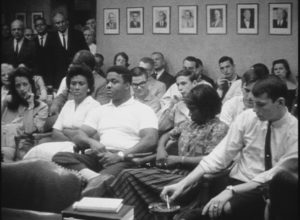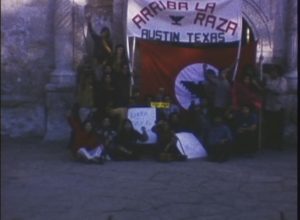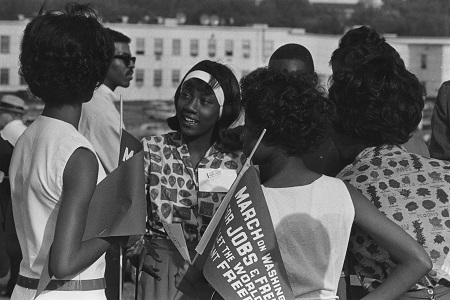
Let this message go forth from Houston and spread all over this land. There is a new force, a new understanding, a new sisterhood against all injustice that has been born here. We will not be divided and defeated again.Coretta Scott King
Minority women organized themselves into separate caucuses representing African Americans, Latinas, Asian Americans, American Indians, and Pacific Islanders. Delegates across all five groups charged that the suggested resolution on minority women failed to adequately address their varied needs and agendas. Joining forces to establish a united Minority Caucus, a coalition drafting committee feverishly worked through November 19 and into the next morning to compose a comprehensive substitute. (According to activist Loretta Ross, these meetings also produced the term “women of color” as a united political identity.)
The plank came to the conference floor on November 20. After Commissioner Jane Culbreth read the original resolution, Minority Caucus representatives took turns reading sections of the substitute. Delegates voted almost unanimously to adopt the replacement resolution, prompting celebration on the floor. Plank 23 of the National Plan of Action thus addressed the double discrimination of sexism and racism, identifying umbrella issues affecting all minorities as well as highlighting group-specific concerns. Among others, recommendations included the guarantee of tribal sovereignty, the enforcement of fair housing laws, and legislation preventing the deportation of immigrant mothers to American-born children.


